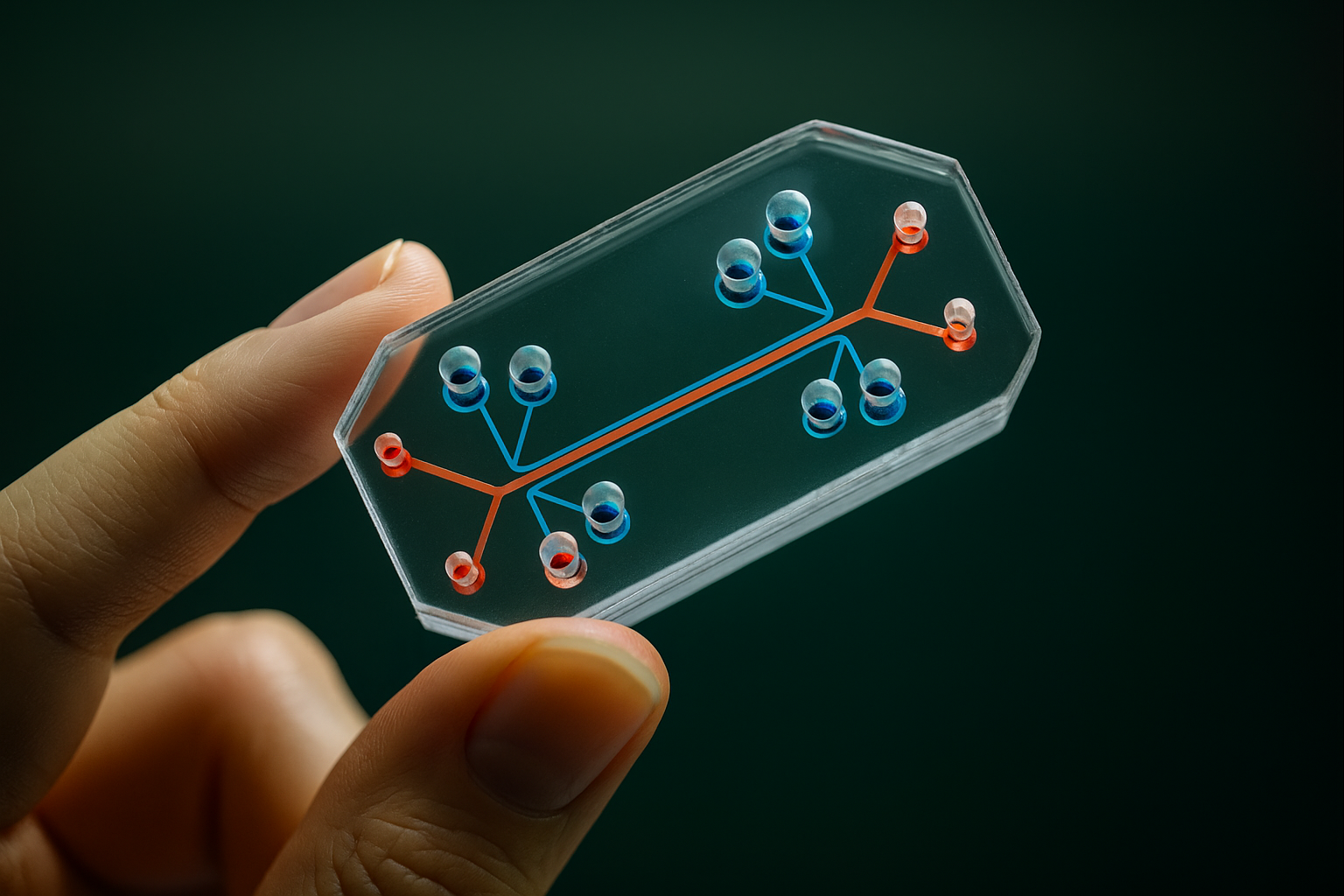Glasses‑free 3D is finally moving beyond gimmicks. Research labs are demoing wafer‑thin true holographic optics; consumer brands are shipping autostereoscopic monitors and laptops; carmakers are putting holographic HUDs into production; and hospitals are adopting in‑air medical holograms—all without headsets. Below is a comprehensive, plain‑English guide to the tech, market, milestones, and pitfalls, with expert quotes and primary sources.
What “glasses‑free holographic display” actually means
The term spans several different technologies. Knowing which is which will help you evaluate claims:
- Autostereoscopic (multi‑view) displays
Use lenticular lenses or parallax barriers to send different views to each eye (often with eye‑tracking). Great for “pop‑out” depth on flat panels; not a true hologram. Samsung’s Odyssey 3D monitor (27″) is a recent example, built around eye‑tracking + lenticular optics. The Verge - Light‑field panels
Emit tens to hundreds of slightly different perspectives so multiple viewers see 3D at once across a “view cone.” Looking Glass Factory’s 16″, 27″ and 32″ systems are the best‑known commercial versions (45–100 views; ~53° cone). lookingglassfactory.com, PetaPixel - Computer‑generated holography (CGH) — true holography
Reconstructs the wavefront of light using a spatial light modulator (SLM), so focus and accommodation behave like the real world. A 2025 Stanford + Meta prototype puts a holographic waveguide and SLM into a 3‑mm‑thin eyeglass‑like display and shows a large field of view with a large eyebox (étendue). Stanford News - Volumetric displays
Create a real, viewable volume by rapidly sweeping or stacking illuminated planes so voxels float in space (e.g., Voxon’s VX2 family). Often lower resolution but truly 360°. Sixteen:Nine
Quick decoder: If you can walk around an object and the focus changes naturally with your eyes, you’re in CGH or volumetric territory. If motion parallax works mainly side‑to‑side with a limited sweet spot, it’s multi‑view/autostereo.
2025 state of the art — what’s real now
1) Breakthrough research: ultra‑thin holographic waveguides
- Stanford + Meta unveiled a mixed‑reality holographic display with a custom waveguide + AI calibration: “Holography offers capabilities that we can’t get with any other type of display,” says Prof. Gordon Wetzstein. The prototype is just 3 mm from lens to screen and aims for a large field of view and eyebox. Stanford News
- Coverage in Tom’s Guide underscores why this matters: full‑resolution holograms, wide FOV, and a larger eyebox than prior CGH demos—hallmarks of real‑world viability. Tom’s Guide
2) Consumer devices: autostereo goes mainstream (again)
- Samsung Odyssey 3D (27″) is a premium gaming monitor that converts 2D to 3D and supports native 3D content via eye‑tracking + lenticular optics. It’s part of a new wave that has editors predicting a sustained push, with Samsung saying it’ll “triple down” on 3D monitors. The Verge, WIRED
- Lenovo Legion 9i (2025) adds an optional glasses‑free 3D screen (switchable 2D/3D) targeted at creators and gamers. The Verge
- ASUS Spatial Vision laptops continue the trend, pairing OLED panels with eye‑tracking for glasses‑free 3D creation and playback. ASUS Global
“Today, we’re at hopefully the inflection point,” says Leia cofounder David Fattal, whose company powers many of these multi‑view devices. WIRED
3) Professional light‑field systems: multi‑viewer 3D for workrooms and venues
- Looking Glass Factory:
• 16″ 4K panel (45–100 views; ~53° optimal cone).
• 27″ (announced 2025; 5K; 45–100 views; 53° cone).
• 32″ 8K (inputs at 7680×4320; 45–100 views; 53° cone; dual DP).
These are built for multi‑viewer collaboration and exhibit floors—no headsets required. lookingglassfactory.com, PetaPixel - Light Field Lab (SolidLight): industrial‑scale holographic & volumetric walls with wild numbers: 10 billion pixels/m² (holographic) and 100 million pixels/m² (volumetric). “…enabling guests to suspend disbelief and engage with an extraterrestrial formed with nothing but light,” says CEO Jon Karafin, describing a 2024 launch with the SETI Institute. lightfieldlab.com
4) Automotive: holographic HUDs hit production
- Envisics is supplying GEN‑2 holographic AR HUDs for 2026 Cadillac models (VISTIQ and LYRIQ‑V). These holographic waveguide HUDs place imagery at multiple depths for navigation and driver assistance. Auganix.org, AutoTech Insight
- GM’s design lead previously noted, “Our collaboration with Envisics is moving into production this year…”—signaling the step from demo to deployment. designnews.com
5) Medicine: in‑air surgical holograms
- RealView Imaging’s HOLOSCOPE‑i received FDA 510(k) clearance and creates interactive 3D holograms from CT/ultrasound data in mid‑air, over the patient—no glasses or headsets. Systems are being installed clinically. DAIC, Auganix.org
6) Volumetric tables and rooms (experiential)
- Voxon builds swept‑volume displays (VX2 family) where voxels float in a physical volume viewable from 360°. Sixteen:Nine
- Axiom Holographics markets multi‑projector “Hologram Rooms” and tables for museums, defense training and LBE entertainment—impressive multi‑user 3D, though projection‑based rather than CGH. Axiom Holographics
How these displays work (and the trade‑offs)
| Approach | How it works | Big wins | Gotchas |
|---|---|---|---|
| Autostereo (lenticular / eye‑tracked) | Steers different views to each eye | Thin panels; decent depth; switchable 2D/3D | “Sweet spot”; limited viewers unless many views; not true optical focus cues |
| Light‑field panels | Broadcasts 45–100+ views | Multiple viewers at once; natural motion parallax | Heavy GPU load; content must be multi‑view or synthesized |
| CGH (true holography) | Reconstructs light’s phase via SLM/waveguide | Correct focus cues; smallest future form factor | Compute‑intensive; speckle; SLM resolution/refresh constraints |
| Volumetric | Swept planes / voxels in air | 360° viewing; no vergence conflict | Usually lower resolution; moving parts; size/brightness limits |
Sources & examples across the table: Tom’s Guide, Stanford News, lookingglassfactory.com, Sixteen:Nine
Content & file formats: where 3D “stuff” comes from
- Live capture: multi‑camera rigs → depth + texture → multi‑view/light‑field streams or reconstructed meshes.
- DCC pipelines: CAD, USD, glTF, game engines → multi‑view synthesis or CGH wavefronts.
- Standards: MPEG‑I MIV (ISO/IEC 23090‑12) and the V3C family define how to compress and carry volumetric/light‑field video (with 6DoF for small ranges). These are maturing and now have conformance software and transport work in IETF. mpeg-miv.org, mpeg.org, IETF
- AI up‑conversion: consumer devices increasingly do 2D→3D depth estimation to expand the content pool (Samsung’s Odyssey 3D is a good example of this). WIRED
How to evaluate a glasses‑free 3D display (buyer’s checklist)
- Use case first (solo gaming vs. multi‑viewer review vs. public signage vs. surgical/industrial).
- View cone & eyebox: wider cones support groups; bigger eyeboxes (CGH) reduce head‑tracking constraints. Stanford News
- Number of views (light‑field/autostereo): more views = smoother motion parallax for more people; Looking Glass offers 45–100 views with a ~53° cone. lookingglassfactory.com
- Resolution & refresh: check both panel resolution and how many effective views it’s split into.
- Switchable 2D/3D: matters for productivity and readability. WIRED
- Compute requirements: many solutions want high‑end GPUs; some pro displays ship with recommended NVIDIA configs. displaydaily.com
- Content pipeline: does it support your CAD/game engine/assets? Are there SDKs and 2D→3D tools? cgw.com
- Safety & comfort: long sessions benefit from correct focus cues (CGH/volumetric) and large eyeboxes. Stanford News
Expert voices
- David Fattal (Leia): “Today, we’re at hopefully the inflection point.” WIRED
- Gordon Wetzstein (Stanford): “Holography offers capabilities that we can’t get with any other type of display.” Stanford News
- Jon Karafin (Light Field Lab): “…suspend disbelief and engage with an extraterrestrial formed with nothing but light.” lightfieldlab.com
- Sandy Lipscomb (GM, on Envisics HUD): “Our collaboration with Envisics is moving into production this year…” designnews.com
(All quotes are short excerpts from the linked sources.)
What’s shipping vs. what’s still in the lab
Shipping/announced products you can buy or spec today
- Light‑field / autostereo: Looking Glass 16″/32″/27″ (multiview, 53° cone); Samsung Odyssey 3D monitor; ASUS Spatial Vision laptops; Lenovo Legion 9i 3D option. lookingglassfactory.com, PetaPixel, The Verge, ASUS Global
- Automotive HUDs: Envisics GEN‑2 holographic HUD in 2026 Cadillac models (production underway at GM). Auganix.org
- Medical holography: RealView HOLOSCOPE‑i (FDA‑cleared, in‑air interactive holograms). DAIC
- Volumetric: Voxon VX2 series; Axiom Holographics rooms/tables for LBE and training. Sixteen:NineAxiom Holographics
Lab‑to‑near‑term
- CGH waveguide headsets: Stanford/Meta’s 3‑mm‑thin prototype shows the path to everyday, eyeglass‑scale holography. Engineering hurdles remain (SLM performance, speckle, compute), but the FOV/eyebox progress is notable. Stanford NewsTom’s Guide
Common myths (and how to spot marketing fluff)
- “Stage holograms” like the famous Tupac show weren’t holograms at all; they used a 19th‑century Pepper’s Ghost reflection trick with a foil/glass and projected image. If it needs a big angled pane on stage, it’s Pepper’s Ghost—not holography. COMSOL
Where this goes next (12–24‑month outlook)
- CGH gets thinner and wider: Expect more demonstrations of large‑étendue holographic waveguides that chip away at the comfort gap with headsets. Stanford News
- Monitors and laptops: With Samsung public about its commitment, anticipate a broader 3D lineup and growing 2D→3D AI pipelines to feed them. WIRED
- In‑car displays: Envisics deliveries for Cadillac are a bellwether; Tier‑1s are racing to scale HUD optics while shrinking projector volumes. Auganix.org
- Enterprise & venues: Light‑field walls and volumetric rooms will stay premium but expand in museums, control rooms, and brand experiences as GPU/server costs fall. lightfieldlab.com
Quick buyer’s short list (by scenario)
- Multi‑viewer collaboration or public demo → Looking Glass 27″/32″ (53° cone; 45–100 views). PetaPixellookingglassfactory.com
- Gaming at a desk → Samsung Odyssey 3D (27″) for autostereo with AI depth conversion. The Verge
- Mobile creation → ASUS Spatial Vision (3D OLED, eye‑tracked) or Lenovo Legion 9i 3D option. ASUS GlobalThe Verge
- Surgical planning / interventional imaging → RealView HOLOSCOPE‑i (in‑air holography; FDA cleared). DAIC
- Immersive venue install → Light Field Lab SolidLight (holographic/volumetric walls, 10B px/m²). lightfieldlab.com
Key sources (selected)
- Stanford & Meta holographic waveguide (research + quotes). Stanford News
- Tom’s Guide coverage of the prototype. Tom’s Guide
- Wired on the “3D without glasses” resurgence (Samsung, Leia, Lenovo). WIRED
- Looking Glass 16″/27″/32″ specs. lookingglassfactory.com+1PetaPixel
- Light Field Lab SolidLight details and quotes. lightfieldlab.com
- Samsung Odyssey 3D announcement. The Verge
- Envisics AR‑HUD in 2026 Cadillacs. Auganix.orgAutoTech Insight
- RealView HOLOSCOPE‑i FDA clearance (in‑air medical holography). DAIC
- MPEG‑I MIV / V3C standards landscape. ISOmpeg-miv.orgmpeg.org
- Pepper’s Ghost explainer (why many “holograms” aren’t). COMSOL












